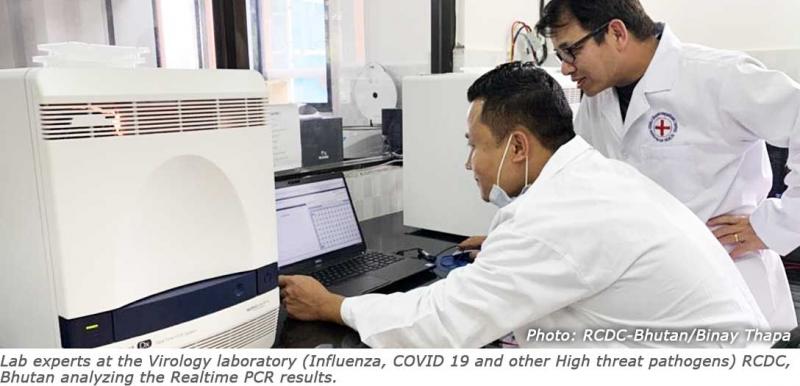
Bhutan harnesses influenza surveillance system for COVID-19
August 3, 2020
Building on a solid sentinel surveillance platform for early detection of influenza, Bhutan has quickly established an integrated surveillance programme for COVID-19 that is capable of monitoring the transmission dynamics of the ongoing pandemic and guiding the national response.
Bhutan has long been strengthening its capacity for influenza surveillance. It published its first national influenza pandemic preparedness and response plan (NIPRP) as early as 2012 and uses regular training, monitoring and assessment to maintain an early detection sentinel-based surveillance system in the country. The country’s national influenza laboratory, the Royal Centre for Disease control (RCDC), provides molecular testing to support surveillance efforts. It may not be a WHO-recognized National Influenza Centre but it has scored a consistent 100% in the WHO External Quality Assessment Project (EQAP) that evaluates laboratory performance in PCR testing. It also has a good track record in reporting influenza data to FluMART quickly and consistently.
This solid foundation in influenza surveillance has enabled a rapid response to the ongoing COVID-19 pandemic. The RCDC established robust molecular detection capacity for COVID-19 at a very early stage of the pandemic, identifying Bhutan’s first case in its own laboratory and avoiding the need to refer samples outside the country. The centre also developed an online platform and guideline for a COVID-19 integrated influenza surveillance system that scales-up the existing influenza surveillance system to incorporate monitoring of the COVID-19 virus. The new system remains a hospital-based one, primarily designed to enable efficient sample collection and transfer for testing. The data generated from it will be used to detect cases of both influenza and COVID-19 in the community, to monitor trends in both viruses and to provide epidemiological information in support of timely prevention and containment measures.
At the same time, the NIPRP is undergoing review to integrate COVID-19 and ensure a more flexible and holistic approach to pandemic preparedness beyond influenza.
Bhutan’s success in pivoting its influenza infrastructure to establish a working national surveillance system for COVID-19 within a very short time shows that early warning, alert and response to a novel respiratory disease is possible even in the face of limited resources.